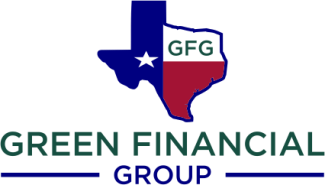
Charitable Giving in Times of Market Volatility: Strategies for Steady Impact
In today's economic climate, characterized by fluctuating markets and uncertain financial forecasts, many wealthy individuals are re-evaluating their charitable giving strategies. While market volatility can raise concerns about investment performance and financial stability, it also presents a unique opportunity to approach philanthropy with renewed focus and strategic intent.
Here are some potential strategies for charitable giving during periods of market uncertainty that can still ensure your contributions continue to make a meaningful impact:
1. Prioritize Long-Term Commitments
In uncertain times, it can be easy to reassess financial priorities. However, maintaining long-term commitments to your chosen charities, especially those that have great meaning to you, is important. For example, if you’ve been supporting a local food bank, consider how your contributions support their sustainability. If they rely on consistent funding to provide meals for families, your ongoing support can provide the stability they need, allowing them to plan ahead even when resources are tight.
2. Utilize Appreciated Assets
Market volatility often means fluctuations in asset values, but this can also present opportunities. Suppose you purchased shares of a tech company several years ago for $10,000, and they are now worth $20,000. By donating these stocks instead of cash, you avoid paying capital gains taxes on the $10,000 gain while providing the full $20,000 value to your chosen charity. This strategy maximizes your tax benefits while delivering a more substantial contribution to the organization.
3. Explore Donor-Advised Funds (DAFs)
Donor-Advised Funds can offer flexibility and control in your charitable giving, especially during turbulent market times. Imagine you contribute $50,000 to a DAF this year and take the tax deduction immediately. You can then decide over the next few years how to allocate those funds to specific charities based on your changing interests or the organizations’ evolving needs. This allows you to benefit from current market conditions and make strategic contributions when the timing feels right.
4. Bunch Your Contributions
Consider the strategy of "bunching" your charitable donations. For instance, instead of donating $10,000 annually to your favorite charity, you could donate $30,000 this year. This larger contribution could push you over the standard deduction threshold, allowing you to itemize deductions and maximize your tax benefits for this year. This upfront generosity helps the charity secure funding it needs to support its programs, especially during a volatile market when donations may decline.
5. Engage in Philanthropic Partnerships
Collaborative philanthropy can amplify your contributions. For example, if you and several other wealthy individuals in your community team up to raise funds for a new homeless shelter, you could collectively donate $100,000. This larger sum might enable the shelter to purchase a building or expand its services, providing immediate support to those in need. By joining forces, you create a more significant impact than you might achieve individually.
6. Focus on Community Needs
Market volatility often leads to increased demand for services in communities. Take, for example, a local educational nonprofit that provides tutoring and resources for underprivileged students. During economic downturns, many families may struggle to afford tutoring services, leading to greater reliance on nonprofit programs. By directing your contributions to this organization, you can help ensure that students continue to receive the educational support they need to succeed, helping to bridge the gap in their learning during challenging times.
7. Maintain Open Communication with Charities
As you navigate your giving strategy, keep in touch with the charities you support. For instance, if you have supported an arts organization, they may inform you that they are facing budget cuts due to decreased ticket sales. By learning about their current funding needs, you might decide to redirect your contributions to ensure they can continue to provide educational programs for children, which may be more pressing than their planned exhibitions.
Market volatility can create uncertainty, but it also offers a chance to reflect on the true impact of our charitable giving. By adopting thoughtful strategies and considering specific examples, you can ensure that your contributions continue to support the causes that matter most to you, even in challenging economic conditions.
I encourage you to discuss your charitable giving plans with your advisor to explore how you can effectively navigate these uncertain times. If you don’t currently have an advisor or are seeking a second opinion on your philanthropic strategies, please don’t hesitate to reach out. Together, we can find the best ways to make a lasting impact while adapting to the evolving financial landscape.
Please Note: Donors are urged to consult their attorneys, accountants or tax advisors with respect to questions relating to the deductibility of various types of contributions to a Donor-Advised Fund for federal and state tax purposes. To learn more about the potential risks and benefits of Donor Advised Funds, please contact us. Every investor's situation is unique and you should consider your investment goals, risk tolerance and time horizon before making any investment. Prior to making an investment decision, please consult with your financial advisor about your individual situation.
The foregoing information has been obtained from sources considered to be reliable, but we do not guarantee that it is accurate or complete, it is not a statement of all available data necessary for making an investment decision, and it does not constitute a recommendation. Any opinions are those of Jeffrey A. Green and not necessarily those of Raymond James.

